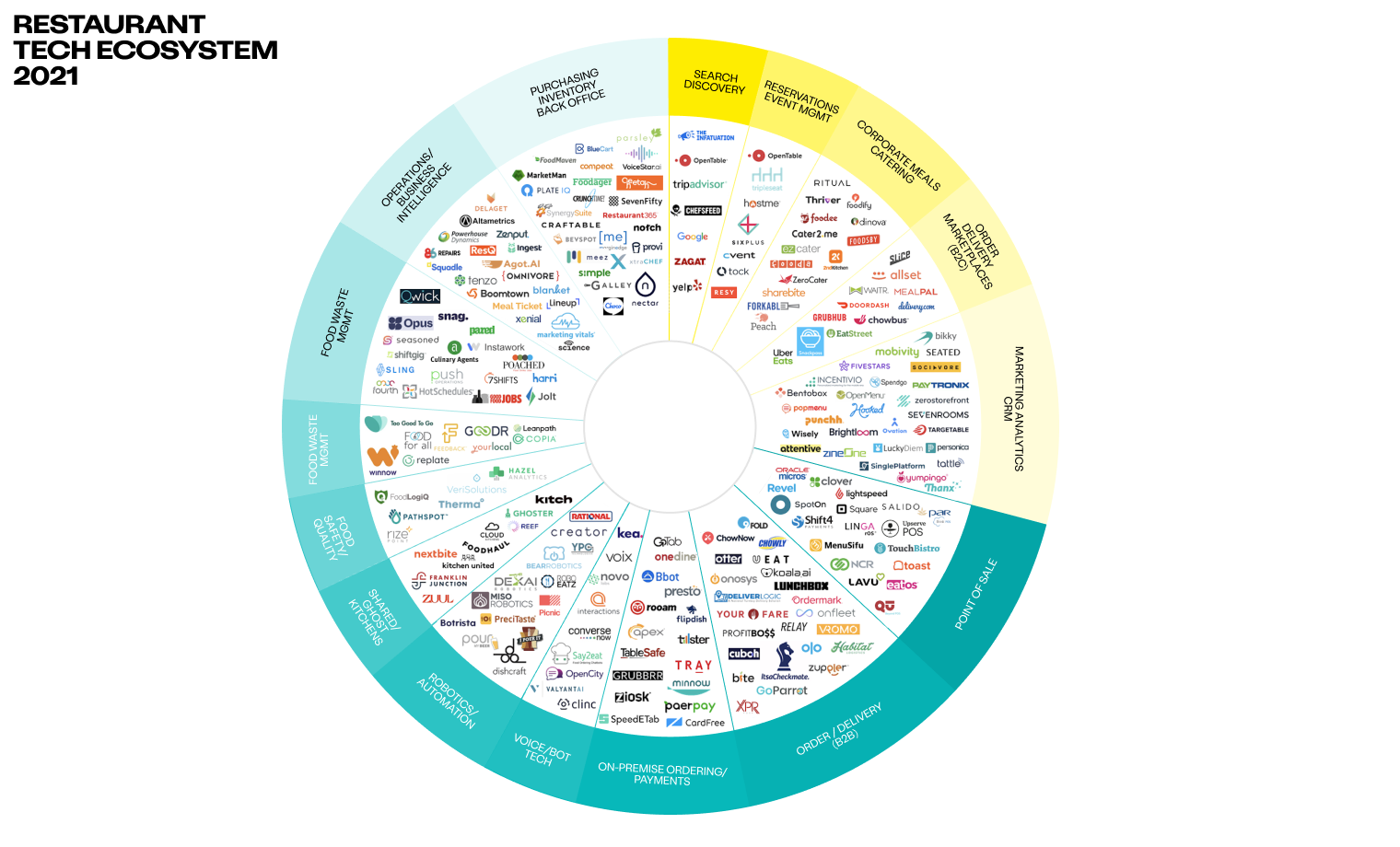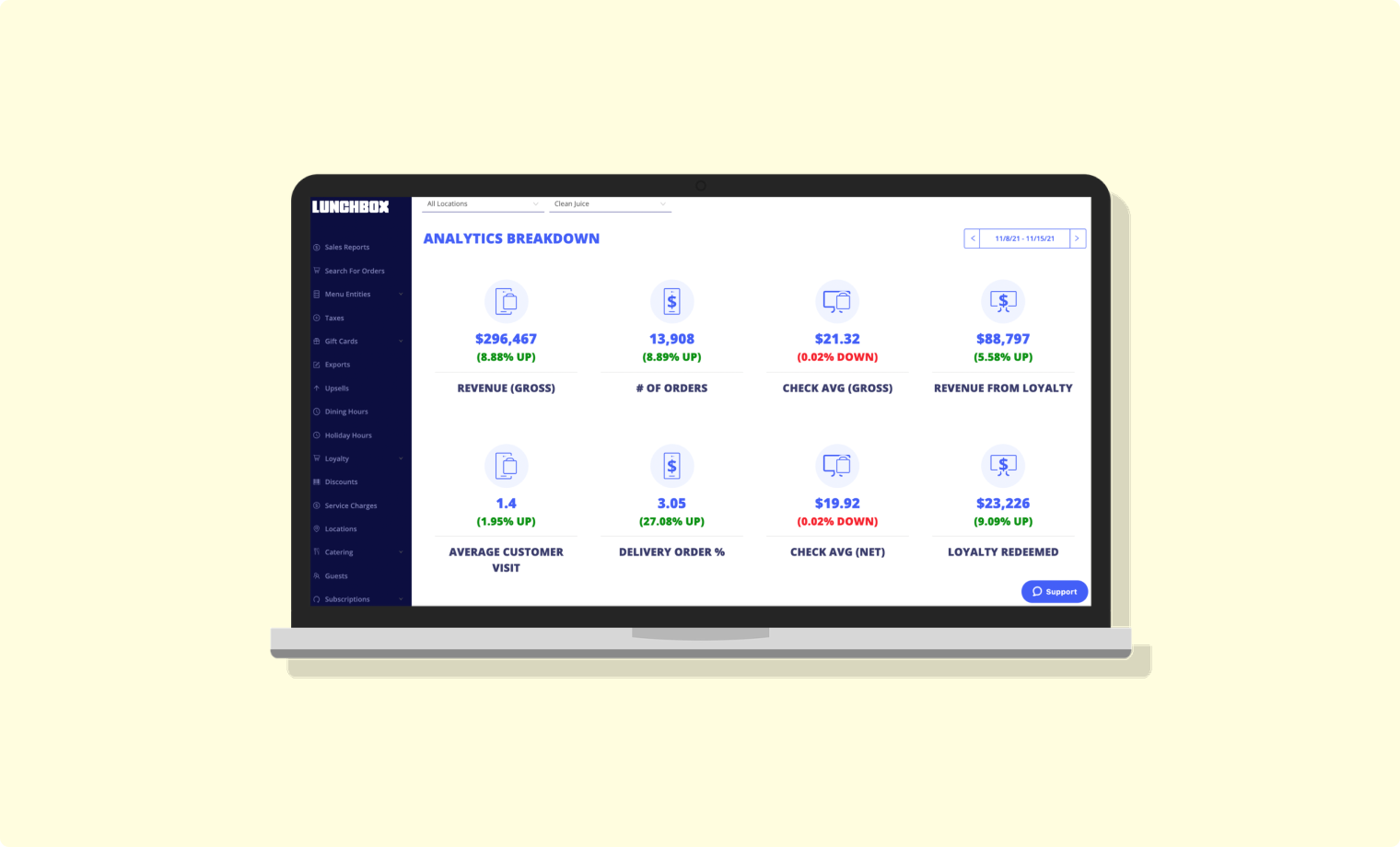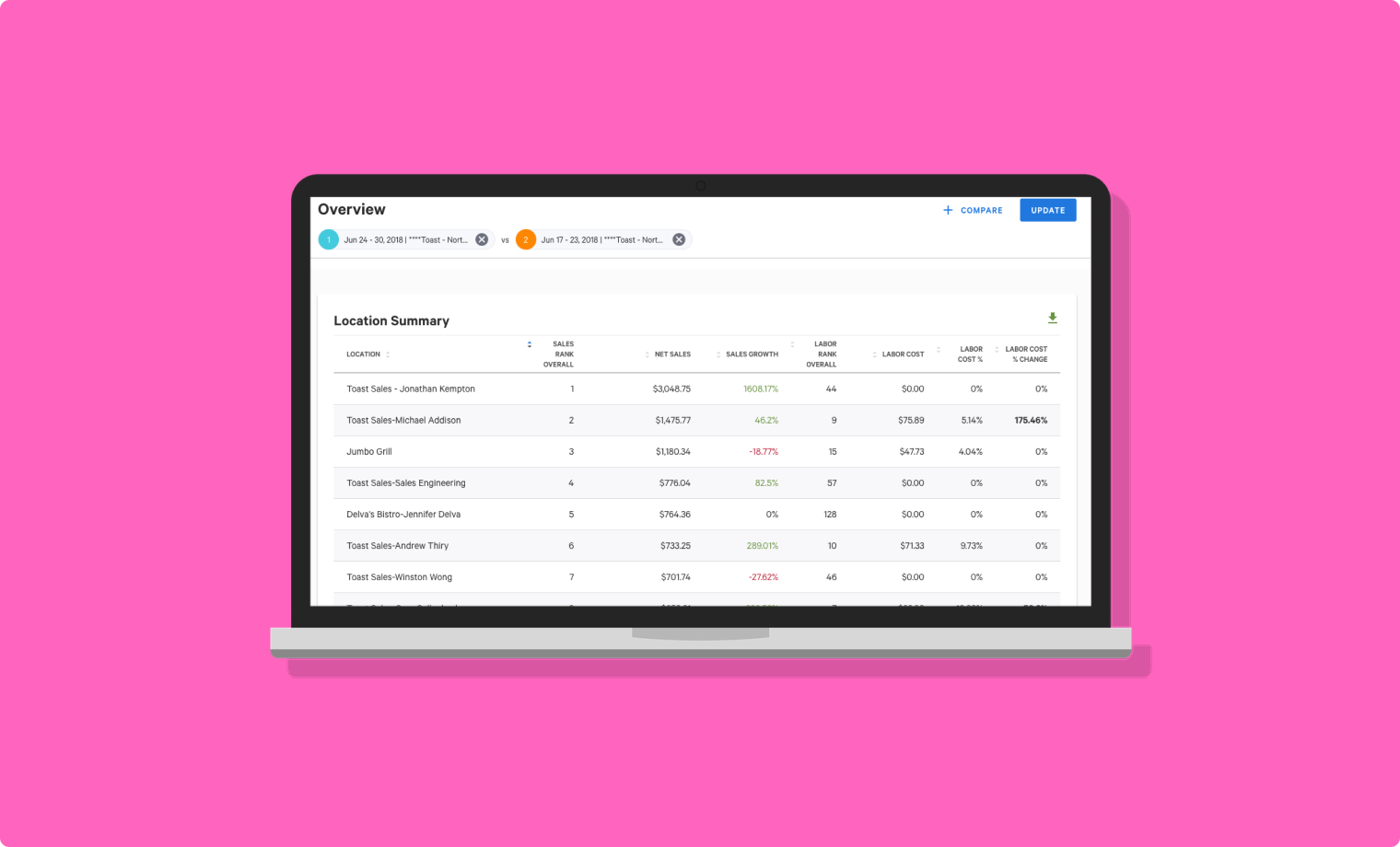Share
- Jump to:
You’ve likely heard a phrase like “data is the new gold”, or “data is the new oil” sometime in the past 10 years. This is true – data is one of the most valuable assets across many industries. Throughout banking, healthcare, education, and government, data drives business decisions, and helps establish baselines, benchmarks, and goals.

With the explosion of restaurant technology companies over the past 10 years, including many restaurant analytics companies, restaurant data has never been so accessible. Source: Back of House, 2021
In recent years, data has become more of a hot topic in the restaurant industry. Restaurants have increasingly turned to digitizing their operations and using technology to better run their establishments and maintain a competitive edge. In fact, 78 percent of restaurant technology companies were founded in the past 10 years.
Restaurant analytics can be gleaned from all of these modern day technology platforms and tools. Technology like point of sale systems, online ordering systems, all-in-one kitchen management software, and loyalty programs are all rich sources of data.
In the past, restaurant operators, owners, and managers used intuition and educated guesses to make business decisions such as when to schedule staff, how to increase return customers, and drum up business. Although intuition sometimes has its place in the restaurant business, tighter profit margins and uncontrollable external factors make this a riskier choice. With access to top of the line restaurant tech, using restaurant data to make decisions is the logical choice.
Every time a customer places an order online or makes a reservation, this results in data. When your staff clocks in and out, or enters an order into a POS system, this also results in data. Essentially every action that takes place in your restaurant, from customer reviews to marketing campaigns, creates a wealth of data that can be used for informed decision making.
A large swath of raw data is useless, unless you have the capacity to analyze it. Restaurant analytics turns raw data into something that is easy to comprehend, and provides insight into trends overtime.
Businesses that use big data analytics have been found to increase profits by 8-10 percent.
About 78 percent of restaurant operators check their business’s metrics everyday - are you doing this? If not, these actionable insights may be the key to improving your restaurant's bottom line.
What Are Restaurant Analytics?
Restaurant analytics refers to the process of analyzing and consolidating many data points gathered from your restaurant to gain meaningful insights into your business. With this level of understanding, components of your business, such marketing campaigns, customer wait times, menus, and staff training, can be improved. Analytics are more than just the financial performance and KPIs (key performance indicators), but a deep dive into the data which tells you why your business is performing the way it is.
What is the difference between restaurant data and restaurant analytics?
Restaurant data is all of the information that is gathered from sources like POS systems, kitchen management software, scheduling platforms, and other technology. Real-time data reports allow for instant action and decision making, and can help managers quickly identify operational issues as they arise.
On the other hand, restaurant analytics is data that has been gathered over time and consolidated. Analytics are not instant, and are best for showing trends over a certain period of time. Massive amounts of data can be useless, but analyzing this data allows businesses to uncover patterns that inform why exactly your business is performing the way it is.
When restaurateurs use historical data gathered from previous years to make future predictions, this is called forecasting. When running a restaurant business, the future can certainly feel uncertain at times, but forecasting can be an incredibly helpful decision making tool.

An online ordering system gives restaurants an overview of their analytics. Source: Lunchbox
Why Restaurant Analytics Are Important
Although data analytics have not always been a key part of running a restaurant business, this practice can increase your business intelligence and optimize performance. Many managers and owners are now aware of the importance of data, but may not know how to gain meaningful insights from it.
A restaurant manager may check POS data to check the daily revenue on a Tuesday, or to see which server is leading sales on the weekend brunch, but this is just scratching the surface. It would be much more insightful to see what your revenue was every Tuesday of the year, and use this to figure out why this is the slowest day of the week. Or, you may decide that it would make the most sense to close on Tuesdays.
Your server is crushing sales every Sunday brunch, but over the past six months, their weekday sales are lower than desired. If you just looked at their sales on one Sunday or one weekday, you wouldn’t be able to see this pattern. This trend shows that your server may need a refresher on upselling drinks and appetizers, or be encouraged to be more of an advocate for weekday dinner specials.
Analytics give you a clear overview of every moving part of your business, and what you need to improve upon. These valuable insights allow you to make better business decisions, save money, boost revenue, increase customer satisfaction, and identify what marketing is working best for your restaurant.
Ability to make better business decisions.
With so much risk and unpredictability in the restaurant industry, data-driven decisions are a safer bet. Using analytics created from data gathered the previous year can help managers forecast for the following year, and make decisions based on these educated predictions. Consolidated data from multiple sources tell the story of your restaurant’s operations, and analytics provide a clear perspective on how your restaurant is performing and why. Although analytics won’t instantly improve your restaurant’s revenue overnight, they allow decision makers to make changes to increase revenue and improve overall performance overtime.

Food and labor are cited as the highest operational costs for restaurants. Source: The Bold Business Expert, 2020
Save money.
In the 21st century, restaurants don’t have much wiggle room when it comes to their budget. Saving money where they can is crucial to increasing their bottom line. Food and labor are two of the biggest operating costs for a food service establishment, and restaurant analytics can help reduce costs in these two categories. By looking at restaurant inventory management patterns overtime, managers can reduce food waste and over-ordering, therefore reducing total food costs.
Labor costs continue to increase in the United States, and staffing your restaurant should be a precise practice to ensure you aren’t spending unnecessarily. Analytics can provide insight on your top (and lowest) performing servers, as well as when your restaurant needs more or less staff.
Identify what marketing works.
Marketing for a restaurant is expensive, and most establishments don’t have a large budget for this. Therefore, the money your restaurant spends on marketing efforts should directly bring in more customers, bring awareness to your brand, or engage with new followers. Whatever your marketing goals are, restaurant analytics can provide clear insight into what channels are helping you reach your goal. Keep in mind what your target demographic is, and what channels they are on. When marketing for special events or holidays, it helps to look back on analytics from the year prior to see what works and what doesn’t.
Are your Tik Tok videos geared towards young Millenials showing off your new summer cocktails a success? If analytics show they had an overall better performance during last summer’s campaign, this can tell you what you need to change.
Examples of Data to Analyze on a Restaurant Analytics Platform
With data so readily available from multiple sources, there are many customer analytics for restaurant owners and managers to look into. Here are just a few options:
Most ordered food.
Not all of your menu items are going to be popular amongst customers, and knowing which items perform the best and worst is an insight restaurateurs will want to have. Slimming down menu offerings has become an increasingly more popular move in recent years after the COVID-19 pandemic, supply chain delays, and inflation. When restaurants purchase ingredients for unpopular menu items, food and money are often wasted.
With restaurant analytics, your restaurant can identify dishes that are cash cows (a hit with customers, but low profit) and stars (high profit, high popularity items) on the menu. These items should be highlighted and marketed, while dogs (menu items that perform poorly) are eliminated or changed. For example, If your newest menu item does not seem to be performing well over the past few months, it may be time to look into the pricing of the item, or customer reviews.
Peak order times and days.
Being able to view trends on when peak order times and days are in your restaurant will greatly help with scheduling staff appropriately. If your restaurant has slow days or times, you don’t want to be overstaffed, as this will lead to unnecessary labor costs. On the flipside, being understaffed on your busiest days and times can lead to frustrated and overworked staff, as well as failure to maximize your profits. Restaurant analytics can ensure that your labor costs are where you want them to be.

Instead of driving to each restaurant location, you should be able to see multi-location performance overtime on one display. Source: Toast, 2022
Most profitable locations.
For a restaurant chain, analytics can help operators and managers see which location drives the most business and is the most profitable. A multi-location summary allows for a clear overview and comparison of each establishment. This insight can be helpful for scheduling staff, and knowing when to adjust operating hours. When restaurateurs are looking to open a new location, this particular analytic can assist in deciding where the best spot would be, based on the performance of the existing establishments. In the worst case scenario where a location must be closed, analytics can help with this difficult decision. If one location is particularly successful, look into why this may be. Is the surrounding demographic perfect for your restaurant concept? Keep this in mind for your next location.
Delivery data.
With the demand for food delivery having skyrocketed over the past few years, accessing analytics on delivery data can help you maximize your profits in this sector of your business. In order to know what type of special promos to offer, take note of which menu items are performing best on what platform. Being able to see which delivery platforms are most popular amongst your customers and which offers the quickest service can assist in choosing which platforms you choose to promote on.
Customer data.
How often does a customer visit your restaurant? How large are customer transactions? Does your restaurant have repeat business? These data points can be gathered through loyalty programs and reservation software. Knowing your diners well can improve the customer experience, and encourage them to continue to return. CRM (customer relationship management) uses data gathered from customers to help your restaurant improve the dining experience overtime.
Dig into marketing channels to see which drive growth.
Keeping tabs on your restaurant’s various marketing channels allows restaurant owners and operators to know which ones are actually driving growth. Paid ads in your local newspaper may not be driving new business, but your recent social media campaign might have garnered new followers and a high level engagement. For example, you might want to check analytics from the previous year to see which marketing channel enticed the most customers for your annual Super Bowl event.
Insights like this allow decision makers to choose where to continue to put money and effort. Knowing which marketing channel is bringing in more business allows you to only focus on what is working, and then bring optimization to that particular channel to maximize your campaign success.
Use Restaurant Analytics To Make Better Decisions
As profit margins remain tight and the competition for customers continuously increases, restaurant managers and owners will need to rely on analytics to ensure long term success for their business. With the robust amount of restaurant tech on the market, it is easier than ever to gain access to data on your restaurant’s day-to-day operations. Managers, owners, and restaurateurs want to run the best restaurant in town, and using restaurant analytics to make informed business decisions is the perfect place to start.